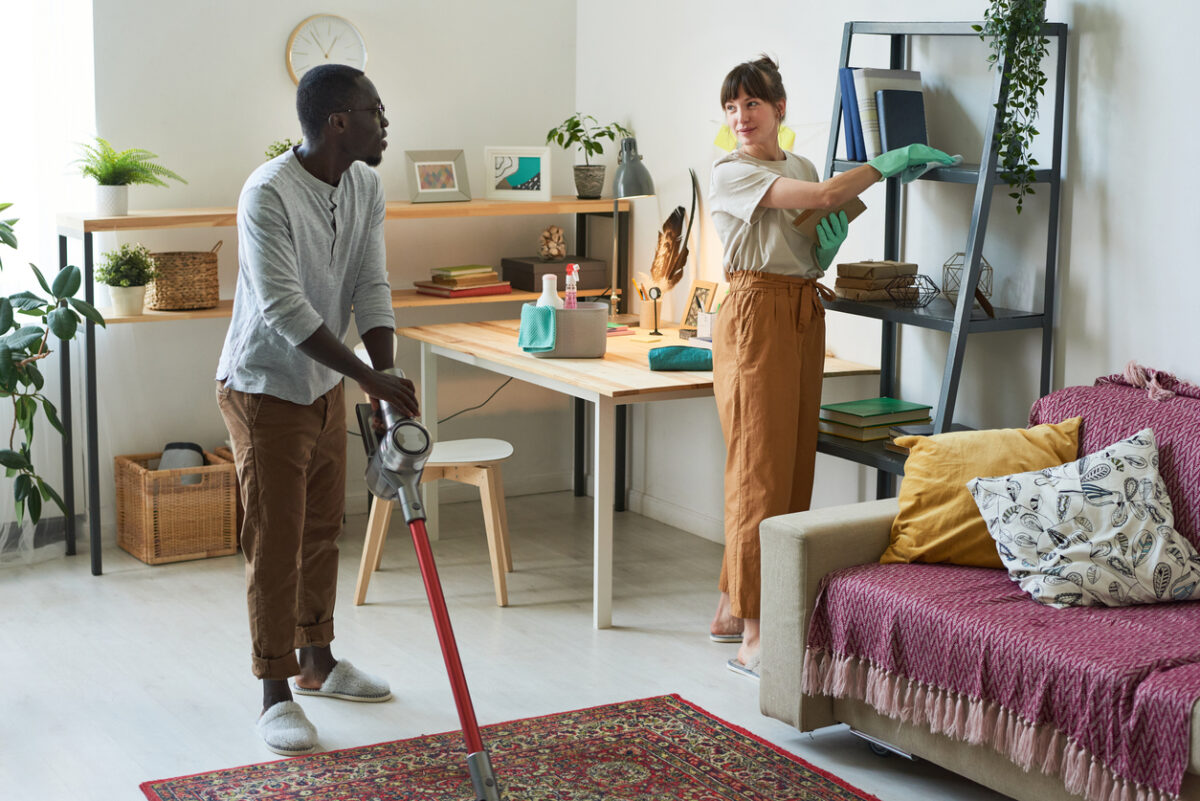We may earn revenue from the products available on this page and participate in affiliate programs. Learn More ›
It might be nice to imagine a special potion that could magically clean and protect all your furniture, regardless of the material or construction. Unfortunately, modern science has yet to come up with a “one-size-fits-all” solution to furniture cleaning.
What is suitable and desirable for use on antique wooden furniture might dull or damage sleek and modern metal, and the same products that clean microfiber fabrics don’t clean leather. To help homeowners figure out how to clean different furniture materials, we’ve put together this guide to the best way to clean all the major types of furniture. We’ve also included some bonus suggestions for the best cleanser—our “secret weapon”—for cleaning each type of material.
RELATED: 30 Ways to Spring Clean Your Whole House—Naturally
Wood
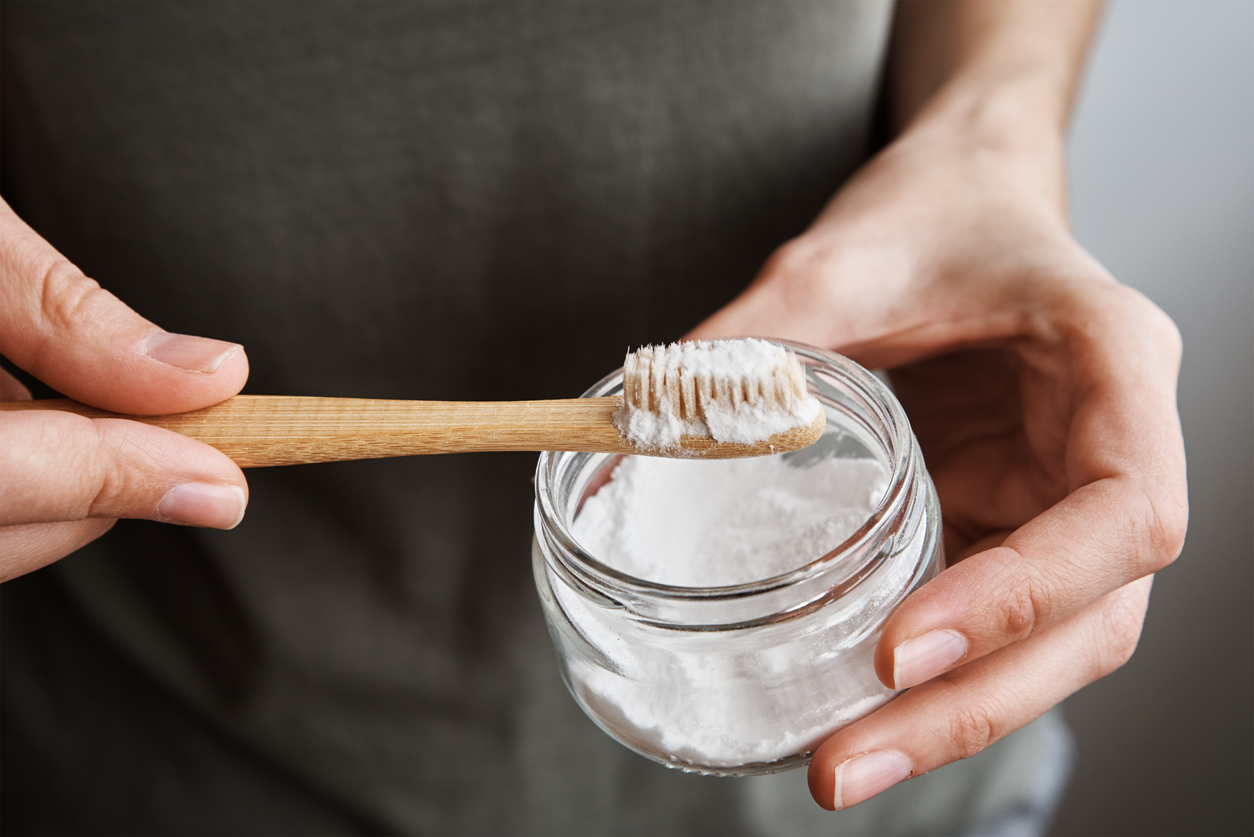
There are many commercial cleaners and polishes marketed for wood furniture, but most leave a residue that builds up over time, dulling and darkening the finish. Whether you have antique heirlooms or new pieces, the best tool for routine cleaning is a soft microfiber cloth. Wipe down furniture regularly to prevent dust, oily smears, and fingerprints.
For removing stubborn dirt, try slightly dampening the cloth and rubbing it in a circular motion without saturating the wood. You can also use a drop of dish detergent mixed with clean water.
To remove water rings or stains, rub a dab of a non-gel toothpaste into the water mark with a soft cloth. When there are very stubborn stains or water marks, use a mixture of equal parts baking soda and toothpaste. Make sure to wipe with a damp cloth and dry thoroughly.
After you’ve cleaned the wood furniture, protect it with a high-quality wax, such as butcher’s wax or beeswax, to preserve the warm glow of your wood.
Secret weapon: The Original Bee’s Wax Old World Formula Furniture Polish will help keep wood furniture shiny and protected without leaving a sticky residue.
MDF
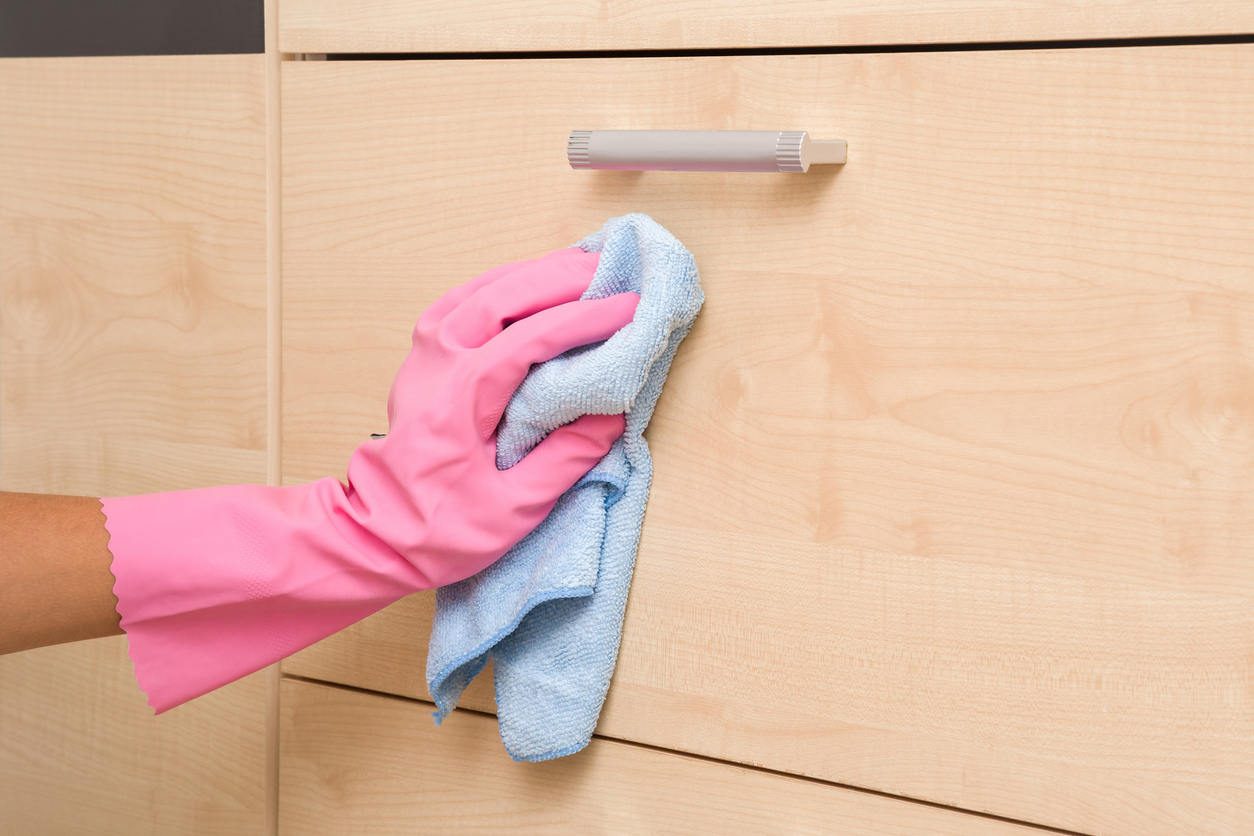
Medium-density fiberboard (MDF) is an engineered wood made from wood scraps and typically features a very smooth surface veneer. The best way to clean MDF furniture is with a soft microfiber cloth, and essentially nothing else. Avoid using any commercial cleansers or furniture polishes, as these may dull its surface and cause a sticky residue to build up over time.
A regular wipe with a microfiber cloth will remove dust and debris, and regular wiping can keep the finish smooth and shiny. To clean spills or stains, rub the surface in a circular motion with a microfiber cloth dampened with warm water, and avoid saturating the surface.
For deeper cleaning, use a drop of dish soap mixed with water, but remove all soap residue by wiping with water and drying with a clean microfiber cloth afterward. Avoid using alcohol, harsh chemicals, abrasive cleaners, or scouring pads, as these can scratch and dull the finish.
Secret weapon: You can’t go wrong by keeping MR.SIGA Microfiber Cleaning Cloths handy in every room in the house, as they trap dirt and dust and are non-destructive for wood finishes.
Leather

A material that connotes elegance and luxury, leather does require some specialized TLC when it comes to cleaning and care. After clearing away any removable cushions, use the softest brush attachment on your vacuum to remove loose dust and debris from the furniture. Then, wipe all surfaces with a clean microfiber cloth.
To deep clean your leather furniture, mix a solution of equal parts white vinegar and water, dampen a microfiber cloth with the solution, and wipe it onto the leather. Rinse and wring out the cloth frequently to avoid spreading dirt around. Avoid saturating the leather, and wipe with a clean and dry microfiber cloth.
Once dry, apply a quality leather conditioner. For more tips and techniques on caring for leather furniture, refer to our complete guide on how to clean leather furniture.
Secret weapon: Leather Honey Leather Conditioner is a powerful nontoxic leather cleaner and conditioner that penetrates deep to protect new leather or rejuvenate and soften old leather.
RELATED: 7 Ways You May Be Ruining All Your Furniture
Microfiber
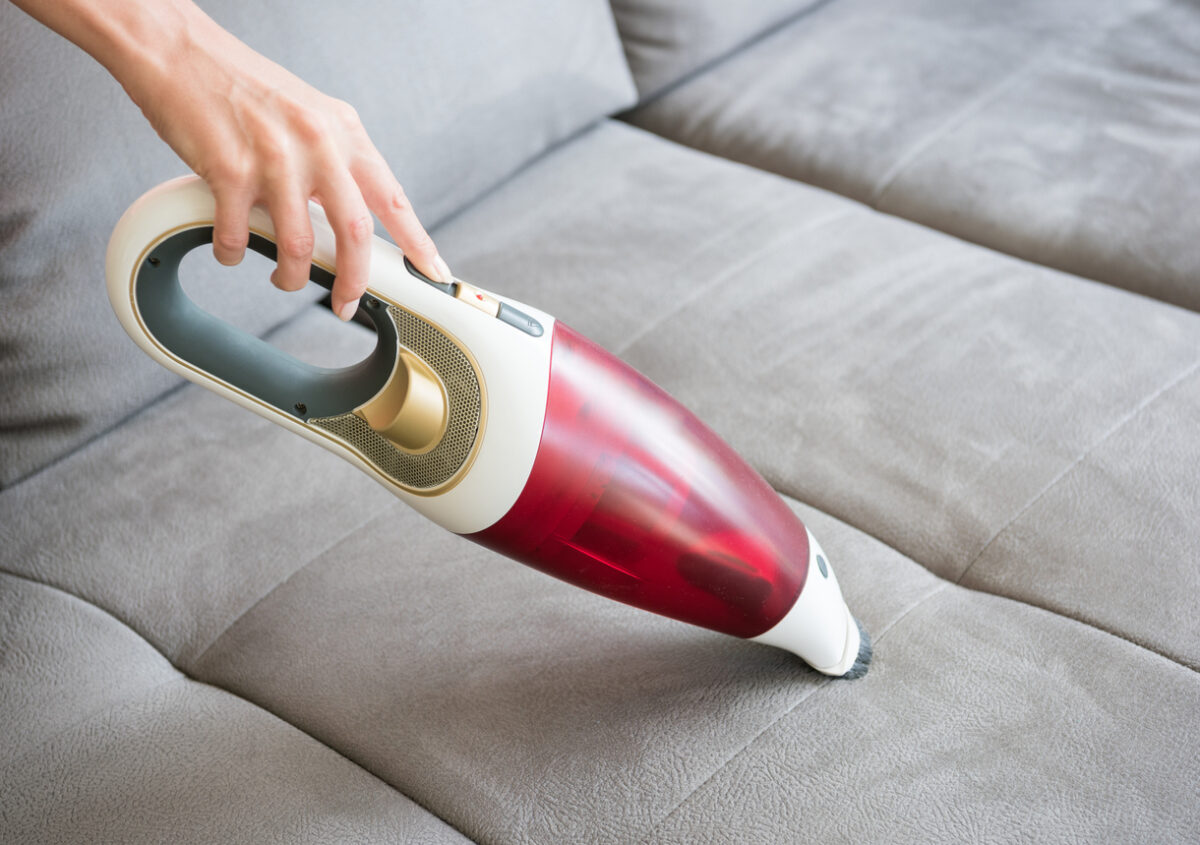
Microfiber fabric is a very popular choice for both indoor and outdoor upholstered furniture because it is versatile, affordable, and comparably more durable than many other fabrics. The best tool for cleaning microfiber upholstery is the brush attachment on your vacuum cleaner, and a weekly pass with the vacuum brush can remove debris to keep the fabric looking its best.
Most microfiber fabrics are stain and water resistant, but if you do need to clean up spills, first check the manufacturer’s recommended care instructions to make sure that the fabric is safe for use with water-based cleansers. Some microfiber fabrics require alcohol- or solvent-based cleansers, so make sure to test your cleanser in an inconspicuous spot first. Using a microfiber cloth, blot—don’t rub—the fabric, and don’t saturate the surface. Blot dry with a clean cloth and allow to air dry, and then brush gently with a soft-bristled brush.
Secret weapon: Virtually all water-safe fabrics and vinyl can be cleaned with 303 Multi-Surface Cleaner, a versatile nontoxic cleanser that cleans and brightens indoor and outdoor fabrics.
Suede
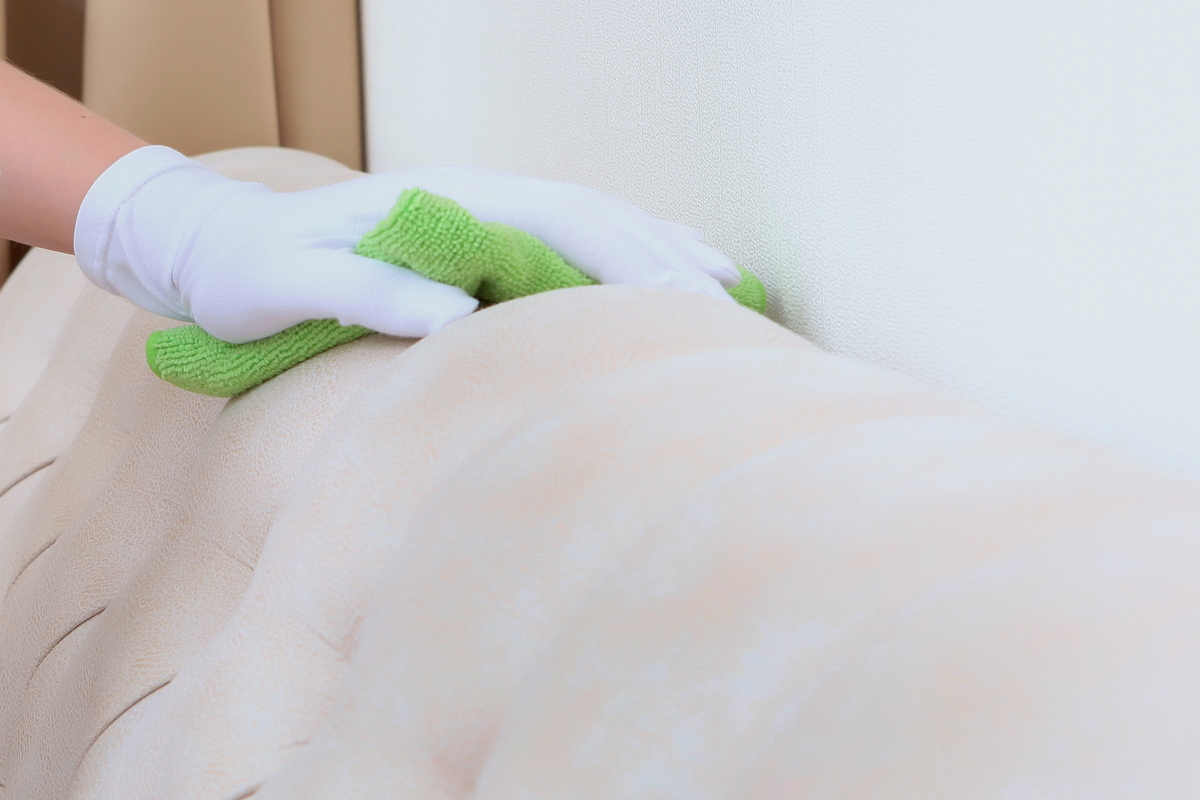
Suede is a sumptuously soft and gorgeous upholstery fabric, but that beauty comes with a price: Suede requires some specialized care. In order to keep it looking fresh and clean, suede needs to be vacuumed on a regular basis using a soft brush attachment. Regularly wipe the suede with a soft microfiber cloth, and using a different pattern each time (front to back, side to side, diagonally, etc.) can also help keep it looking its best. Freshen up older suede by spraying it with a top-shelf suede conditioner.
To remove stains and smells, sprinkle the fabric with baking soda and let it sit overnight before thoroughly vacuuming. For particularly stubborn stains and spills, a professional upholstery cleaner may be able to help.
Secret weapon: Nourish, protect, and waterproof suede fabrics with a high-quality conditioner specifically designed for suede, like the Care & Cool Suede and Nubuck Conditioner that penetrates pores and conceals scratches and scuffs.
Upholstery
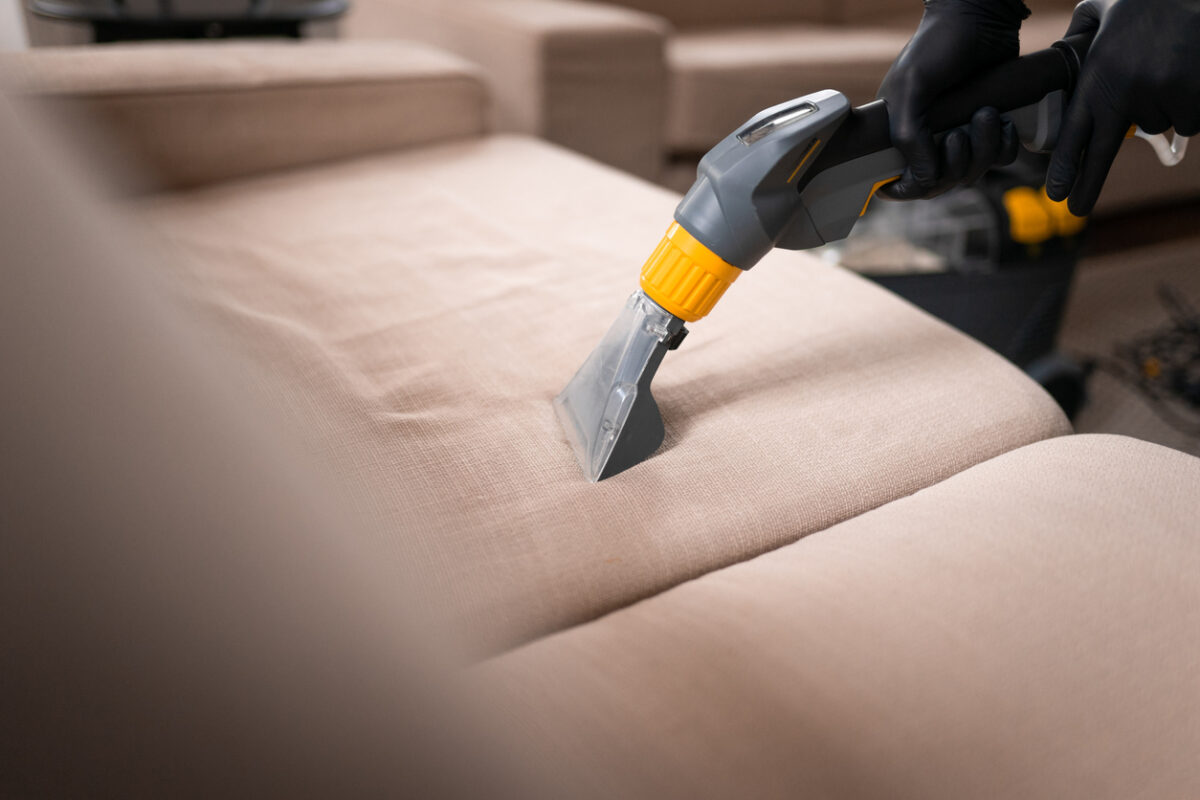
Upholstered furniture is the most popular choice for many American households, and it comes in a seemingly limitless array of colors, styles, and fabrications, including cotton, wool, polyester, chenille, velvet, and silk. Upholstery looks best when it is vacuumed regularly using a soft brush attachment.
The best way to clean upholstery is to follow the manufacturer’s recommendations. Each fabric type will have specific instructions as to what can and cannot be used for cleaning. The care label is usually located under a cushion or on the bottom of the furniture, and it will feature a care code: W for water-based cleansers, S for solvent-based cleansers, WS for water or solvent, and X for professional cleaning required.
If the fabric has a W or WS code, you can use a damp microfiber cloth, or water combined with a few drops of dish soap, to gently blot up stains or spills. It’s important to not saturate the fabric, allow it to air dry, and brush it with a clean dry microfiber cloth. Fabrics with an S code are cleaned with an upholstery-safe solvent cleanser, following the manufacturer’s instructions for application. For more information, check out our guide on how to clean upholstered furniture.
Secret weapon: Get rid of the toughest fabric stains, including coffee, wine, and grease, with the power of Oxy Citrus Stain Remover & Cleaner from Good Life Solutions.
Metal
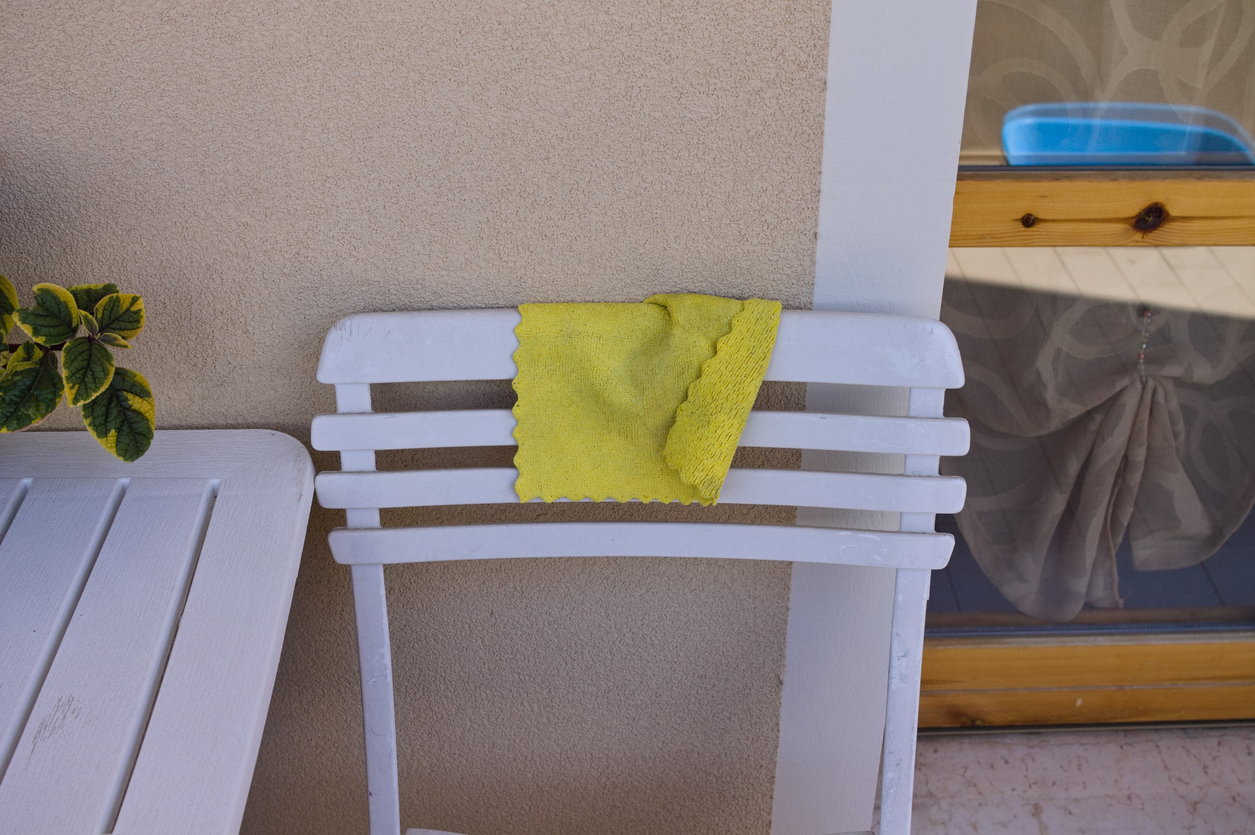
You might think of metal furniture as more or less indestructible, but both indoor and outdoor furnishings can rust, tarnish, or build up a layer of grit and grime. Vacuum metal pieces on a regular basis using a brush attachment to get into all the nooks and crannies, and wipe down with a clean microfiber cloth.
Warm water and an old soft-bristled toothbrush can be used for a deeper clean. Add a drop or two of dish soap for removing any caked-on debris, and rinse and dry thoroughly with a clean microfiber cloth.
Avoid using harsh chemicals or abrasives, as these may scratch, discolor, or pit the finish. For outdoor furniture, you may occasionally have to scrape off rust stains with a wire brush and then repaint the metal with a spray primer and spray paint designed for outdoor pieces.
Secret weapon: Clean chrome, stainless steel, and other types of metal with a convenient spray like Pledge Multi-Surface Cleaner that gently and safely removes surface dirt, fingerprints, and grease.
Glass
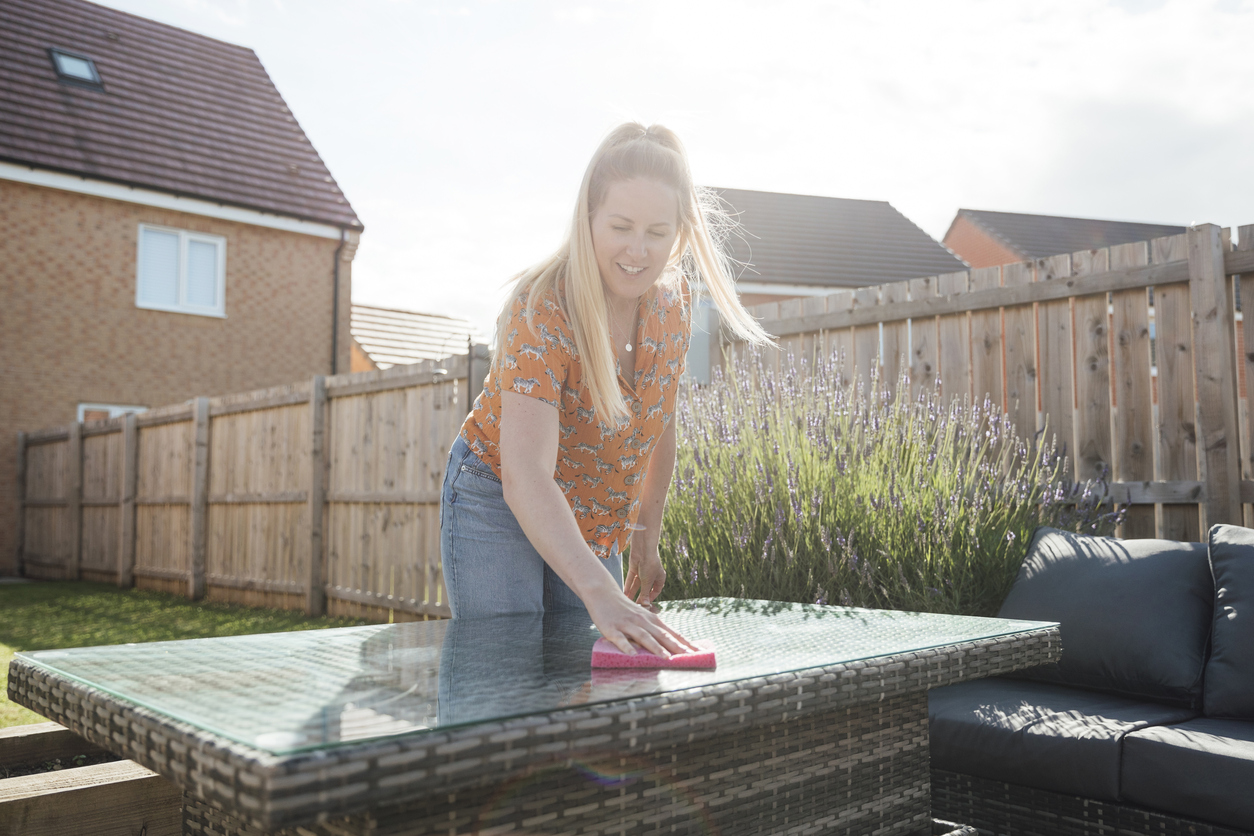
Many indoor and outdoor furniture pieces feature glass tabletops or glass doors, and nothing spoils the look of glass like fingerprints (or, in the case of pet owners, nose prints). A regular wipe with a soft microfiber cloth will remove most smudges.
To remove grease, oil, or spills, use your favorite glass cleaner. To make your own, use a spray bottle and mix a solution of three parts white vinegar to one part water and a drop of dish soap. Spray the solution liberally on the glass and wipe with a clean microfiber cloth or old newspapers.
Secret weapon: When it comes to cleaning glass, Windex Original Glass Cleaner has been a go-to cleanser for decades and still works great today.
RELATED: The Best Natural Cleaning Products of 2022
Wicker/Woven

Wicker, rattan, sea grass, and other types of woven furniture are increasingly popular choices for both indoor and outdoor furnishings because they’re durable, sturdy, comfortable, and easy to clean with the right tools and know-how. A regular wipe with a soft microfiber cloth will remove surface dust and debris, and a soft-bristled paintbrush can get into the material’s crevices and corners.
When deep cleaning, vacuum using the soft brush attachment and set the suction to the lowest level to avoid pulling apart the woven fibers. To remove heavier dirt and stains, wipe the furniture with a soft microfiber cloth dampened with warm water, or add a drop of dish soap. Avoid saturating the wicker.
Outdoor wicker furniture that may attract mold and mildew benefits from wiping it with a solution of one part white vinegar to three parts water. Then, wipe again with warm water. For more ways to keep your woven furniture looking great, check out our complete guide on wicker care.
Secret weapon: Put the traditional cleaning power of Carbona to work on your wicker with Carbona Pro Care Oxy Powered Outdoor Cleaner, an effective outdoor stain remover and all-purpose cleaner.

